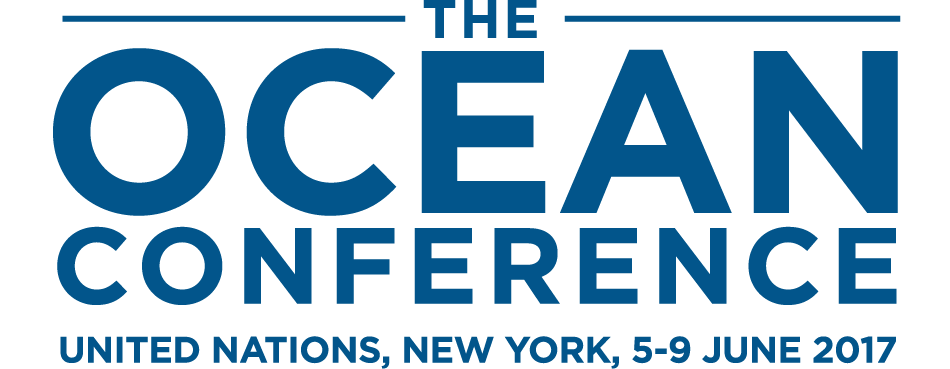Daily report for 6 July 2018
22nd Meeting of the Subsidiary Body on Scientific, Technical and Technological Advice (SBSTTA 22) and 2nd Meeting of the Subsidiary Body on Implementation (SBI 2) of the Convention on Biological Diversity (CBD)
SBSTTA 22 met in morning, afternoon, and evening sessions on Friday to consider conference room papers (CRPs) on the following agenda items:
- Protected areas and other effective area-based conservation measures (OECMs);
- Invasive alien species (IAS);
- Conservation and sustainable use of pollinators;
- The second work programme of the Intergovernmental Science-Policy Platform on Biodiversity and Ecosystem Services (IPBES); and
- Biodiversity and climate change.
The contact group on digital sequence information (DSI) met at lunchtime. A Friends of the Chair meeting to resolve three outstanding paragraphs in CBD/SBSTTA/22/CRP.2 on synthetic biology also met and reported back to plenary on Friday night.
Protected Areas and OECMs
SBSTTA Chair Theresa Mundita Lim introduced document CBD/SBSTTA/22/CRP.3.
On the definition of OECMs, MOROCCO called for considering socio-economic values, and NORWAY called for recognition of “other locally relevant values.”
Responding to a request by CANADA, the reference to “national” OECMs was removed from the draft COP decision calling for the submission of data on OECMs to the World Database on Protected Areas, to clarify that data on OECMs identified by subnational governments and indigenous peoples and local communities (IPLCs) should also be submitted.
Parties diverged on whether the guiding principles and criteria for identifying OECMs should apply across “all natural and semi-natural ecosystems,” “all ecosystems important for biodiversity,” or “all ecosystems.” BELGIUM stressed the need to avoid applying OECM status to intensive agricultural areas. The UK, supported by FINLAND, EGYPT, and UKRAINE, emphasized the possibility of using OECMs to support restoration of ecosystems that are not currently important for biodiversity, but that have the potential to be. Parties agreed to reference ecosystems both currently and potentially important for biodiversity in the chapeau of Annex III, coupled with an acknowledgement, in the guiding principles, that OECMs should either have, or aim to have, significant biodiversity value.
BELGIUM, supported by FINLAND, NORWAY, SWEDEN, and the EU, suggested a new paragraph stressing that OECMs have an important and complementary role to protected areas in the conservation of biodiversity, and contribute to the coherence and connectivity of protected areas’ networks and to mainstreaming biodiversity into other uses in both land and sea, and across sectors.
SWEDEN proposed stating that OECMs “with relevant scientific and technical prerequisites have the potential to” demonstrate positive biodiversity outcomes. CANADA and JAMAICA noted that this requirement “sets the bar too high,” and parties eventually converged on OECMs having “the potential” to demonstrate positive outcomes “with relevant technical and scientific information and knowledge.”
On the list of criteria for OECM identification, SWEDEN proposed, and delegates agreed, to add a paragraph highlighting the importance of documenting OECMs in a transparent manner to provide for a relevant evaluation of their effectiveness, functionality, and relevance to Aichi Target 11.
Regarding the voluntary guidance on effective governance models for management of protected areas, NEW ZEALAND suggested that the free, prior, and informed consent (FPIC) to be obtained by IPLCs be consistent with national policies, regulations, and circumstances.
Invasive Alien Species
SBSTTA Chair Lim introduced document CBD/SBSTTA/22/CRP.4.
Following a proposal by NEW ZEALAND, supported by PERU and the EU, parties agreed to recognize the “need for collaboration” instead of the “shared responsibility” to minimize the risks associated with e-commerce in IAS. CANADA called for highlighting the “voluntary” nature of the supplementary guidance for avoiding unintentional introductions of IAS.
BOLIVIA urged removing references to “cost/benefit and cost-effectiveness analysis” to avoid restrictions on the methodological approaches discussed in the online forum, with SWEDEN proposing an overall shorter version of the paragraph, noting that details on the forum and the Ad Hoc Technical Expert Group (AHTEG) would be defined in the terms of reference. EGYPT questioned the need to convene additional online fora on the issue. SWEDEN supported a sequential approach with an exchange of information and experiences through an online forum, and then an AHTEG to take stock of these discussions. Parties agreed to establish an AHTEG, subject to the availability of resources.
Parties agreed to NEW ZEALAND’s proposal, rephrased by SWEDEN, to encourage further work on the classification by the International Union for Conservation of Nature (IUCN) of the impact of IAS on social, economic, and cultural values.
Delegates further addressed the terms of reference for the AHTEG, focusing on the nomination procedure for experts. NORWAY stressed the need to follow established procedures, with the Secretariat noting that the AHTEG will convene according to SBSTTA’s modus operandi.
Conservation and Sustainable Use of Pollinators
SBSTTA Chair Lim introduced document CBD/SBSTTA/22/CRP.5.
ARGENTINA called on the Secretariat to clarify inconsistencies in the summary, contained in Annex II of the CBD report on the relevance of pollinators and pollination to conservation and sustainable use of biodiversity. FRANCE further highlighted that the report had yet to be finalized and should therefore not be “welcomed” at this stage.
On urging parties to address the drivers of pollinator decline, PERU called for a reference to pesticide use. FRANCE concurred in cautioning against solely mentioning IAS, highlighting that research shows that pesticide use and land degradation are also important drivers. FRANCE proposed, and parties agreed, to add a reference to “other drivers of pollinator decline identified in Annex II.”
Regarding the updated plan of action 2018-2030 for the International Initiative on the Conservation and Sustainable Use of Pollinators, a lengthy discussion took place on references to living modified organisms (LMOs). On a reference to the importance of other direct drivers of pollinator loss, such as monoculture, use of pesticides, and some LMOs, with increasing evidence of both lethal and sub-lethal effects of pesticides on bees, ARGENTINA, opposed by BOLIVIA, GUATEMALA, PERU, VENEZUELA, and FRANCE, requested deletion of the reference to LMOs, which was bracketed.
Regarding removing or reducing perverse incentives that are harmful to pollinators and their habitats, ARGENTINA suggested that this be in accordance with international law. NORWAY proposed, and delegates agreed, that it be consistent and in harmony with international obligations.
COSTA RICA proposed, and delegates agreed to, a new paragraph promoting the development of methodologies to systematically monitor pollinators in natural ecosystems, especially in protected areas or sites of importance for conservation, and in productive ecosystems in such a way as to facilitate the provision of detailed visual maps at the local level and subsequent decision making.
On Annex II (summary of the review of the relevance of pollinators), ARGENTINA, opposed by BOLIVIA, pointed to inconsistencies between the summary and the longer version of the report, and specifically called for deleting the paragraph on the threats posed by genetically modified crops that carry traits for herbicide tolerance or insect resistance. The Chair asked for bilateral consultations to resolve the matter.
IPBES Second Work Programme
In the evening, SBSTTA 22 Chair Lim introduced document CBD/SBSTTA/22/CRP.6 on the second IPBES work programme.
On the draft recommendation and the annex, which contains items that the CBD requests IPBES to consider in the context of its strategic framework and work programme towards 2030, the UK, DENMARK, and others amended items to address concerns that the Convention should not be interfering with IPBES’s independence by giving it too much direction. The EU amended a sub-paragraph on methodological assessments on the effectiveness of various policy instruments, and policy and planning support tools, to link it back to “understanding how to achieve transformational change.”
Biodiversity and Climate Change
SBSTTA Chair Lim introduced the document CBD/SBSTTA/22/CRP.7.
On IPLC participation in the design, implementation and monitoring of ecosystem-based approaches to climate change adaptation and disaster risk reduction, NEW ZEALAND suggested the use of indigenous and traditional knowledge should be subject to the FPIC of indigenous peoples only “as appropriate to national policies, regulations, and circumstances.” NORWAY suggested such use should only be subject to “consultations in order to obtain” FPIC. Following lengthy deliberations, parties agreed to revert to the original text, which requires FPIC.
ARGENTINA, supported by EGYPT, suggested “taking into account” transboundary approaches at the regional level when undertaking the design, implementation, and monitoring of ecosystem-based approaches to climate change adaptation, rather than “enhancing and strengthening” them.
Regarding a paragraph promoting ecosystem restoration, SOUTH AFRICA and BOLIVIA suggested adding sustainable management post-restoration. On fostering coherence in the implementation of the Convention and other international frameworks, parties eventually agreed to refer to “actions” under the Paris Agreement, as proposed by ARGENTINA and supported by BRAZIL.
BRAZIL’s unease about encouraging the integration of ecosystem-based approaches when updating nationally determined contributions (NDCs) under the Paris Agreement was resolved with FRANCE, supported by NORWAY, FINLAND, and CUBA, pointing out that this was consistent with language agreed on in CBD decision XIII/4, whereby parties were encouraged to integrate ecosystem-based approaches “when developing” their NDCs.
Synthetic Biology
Nathalie Campos Reales (Mexico), facilitator of the Friends of the Chair group on synthetic biology, presented the outcomes of the group’s deliberations.
Delegates agreed that research and analysis are needed before considering releasing organisms containing engineered gene drives into the environment. Delegates also agreed to call on parties to continue to develop or implement measures to prevent or minimize exposing the environment to organisms, components, and products of synthetic biology in contained use, as well as measures for their detection, identification, and monitoring in accordance with domestic circumstances or internationally agreed guidelines, as appropriate, with special consideration to the centers of origin and genetic diversity.
No consensus was reached on a paragraph calling on parties to apply a precautionary approach to engineered gene drives, with BOLIVIA suggesting that parties should “refrain from” the release, including the experimental release, of such organisms. A proposal by RWANDA, to establish a process and modalities for regular horizon scanning, monitoring, and assessing of new developments in the field of synthetic biology, also remained bracketed.
Contact Group on DSI
The contact group on digital sequence information met at lunchtime to address a non-paper produced by the Co-Chairs. The non-paper contained four bracketed paragraphs in the draft recommendation and an additional three bracketed paragraphs under the AHTEG’s terms of reference. During discussions, divergence of opinions surfaced, which resulted in numerous new proposals. The vast majority of these proposals remained bracketed, as no consensus could be reached. Eventually the entire text was bracketed and sent to plenary.
In the Corridors
While the heatwave receded from the streets of Montreal, discussions heated up inside as SBSTTA 22 met into the night, trying to complete consideration of the remaining CRPs to no avail.
The day’s outcomes left delegates and participants with mixed feelings. On the one hand, the CRP on protected areas and OECMs was hailed by many as a “landmark recommendation,” especially given that before 2010 OECMs were not even on the CBD’s agenda. On the other hand, negotiations on DSI did not seem to advance understanding of the issues. The marathon “Friends of the Co-Chairs” meeting on Thursday produced a relatively clean non-paper, with only a few bracketed paragraphs, yet divergent opinions resurfaced when the contact group reconvened at lunch time, resulting in bracketing the entire text. Many seasoned delegates were unable to recall a bracketed recommendation being forwarded to the COP, expressing their disappointment over the lack of agreement despite many hours of negotiations. Others noted, however, that given the entrenched positions, including all perspectives in the recommendation will ensure that the COP can take them into account in what is expected to be a herculean task in Egypt.
With one day remaining, three more CRPs to be discussed, and ten draft recommendations to be adopted, Saturday could be another long day.
-->
Specific funding for coverage of the Ocean Conference - June 2017, has been provided by the
XXX, XXX, and XXX
-->
IISD Reporting Services is a division of the International Institute for Sustainable Development (IISD).
Earth Negotiations Bulletin (ENB), ENB+, and Knowledge Management for Sustainable Development
are branches within IISD Reporting Services.
© 1992-2018, IISD Reporting Services. All rights reserved.







